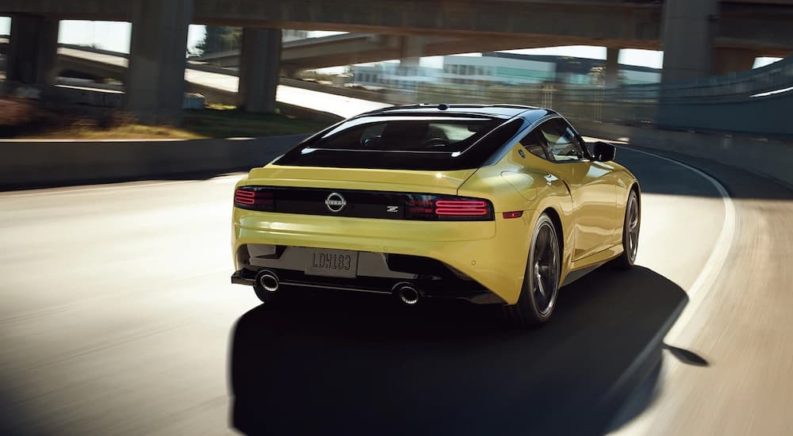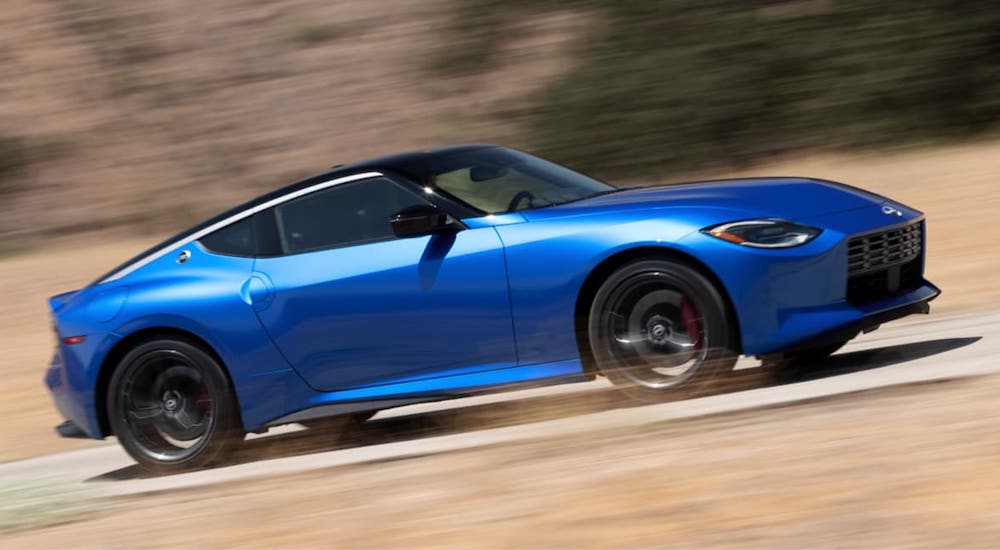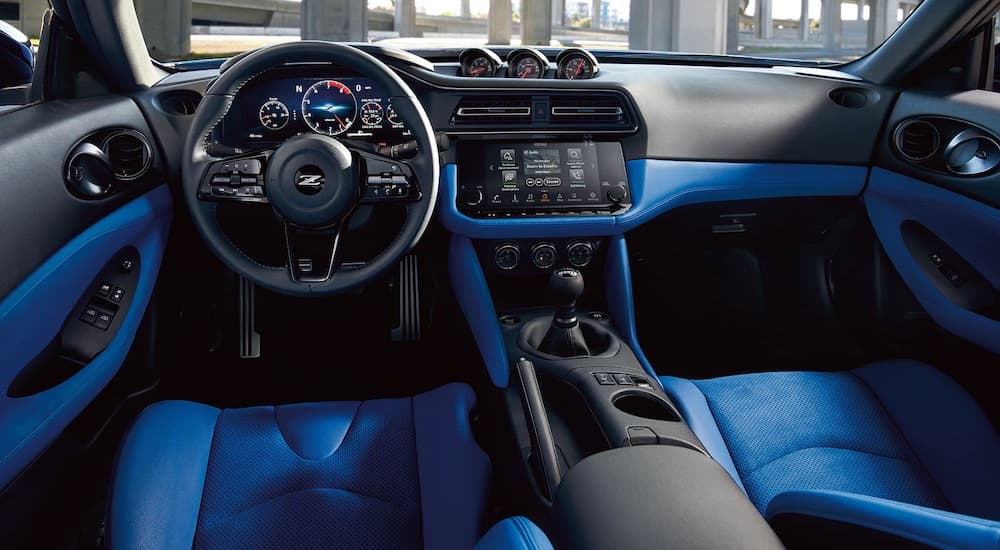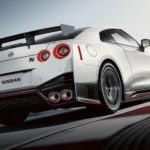Over 50 years ago, a legend was born, and it was called the Z. The Nissan Z-car, sometimes known as the Fairlady Z, wowed car enthusiasts and spurred half a century of Z greatness. If you haven’t fantasized about owning one by now, chances are you will. The first thing that catches my eye when visiting a Nissan dealer near me is always the latest Z model. But why is this sports car such an icon? This guide will answer that question and give you a closer look at some of the greatest generations of the Z.
Who Doesn’t Love the Original?
The story of the Z begins overseas. In 1969, the first generation of Japan’s ultimate sports car rolled off the assembly line, and it was called the Fairlady Z. Envious American enthusiasts awaited eagerly for the Z to make its way to the United States. Thankfully, they didn’t wait long, and shortly after Japan unveiled the Fairlady, the US was introduced to the Datsun 240Z. Other than the Datsun having a larger 2.4L engine, there is not much that varies between the American and Japanese models.
Inspired by some of the most iconic sports cars of the time, the Datsun 240Z ended up becoming one of the most collectible models within the lineup. A long sleek nose, a low-to-the-ground stance, and inset headlights made the car a sports car, but the softened edges and unique style made it a Z. The distinct style has been evident in every generation, making it obvious what kind of car you’re looking at.
Changing Styles
After the Datsun 240Z, Nissan debuted the Datsun 260Z in 1974, followed shortly after by the 280Z in 1975. The 280Z, with its 2.8L engine, is the final edition of the original Z bodystyle. Despite having a more powerful engine, the 280Z was subject to the increasing emissions restrictions that were becoming more prominent during this time and only produced 149 hp––two less than the original 240Z.
The 280Z was replaced by the second-generation Datsun 280ZX in 1978. Being viewed as more of a luxury touring car than a sports car, the 280ZX is roomier but also heavier. The overall stance was changed, partially to accommodate the new 2+2 seating that was first added with the 260Z. The interior was updated in the 280ZX to reflect a more refined vehicle, including leather upholstery.
The third generation saw a major change in the exterior, reflecting the style of the 1980s with boxy lines and pop-up headlights. The Nissan 300ZX dropped the Datsun name and sported a new 3.0L V6 engine. Despite its less aggressive sports car theme, it proved to still be able to hold its own. In 1985 it won the All Japan Rally Championship, cementing its popularity amongst sports car enthusiasts of the time.
Entering its fourth generation in 1990, the Z kept the 300ZX designation but began taking on the more rounded appearance we know today. This Z was able to show some power again, with the 3.0L V6 pumping out 222 hp. For those who wanted even more power, a twin-turbo option was capable of 300 hp. Quite an improvement from some earlier models.
This generation was enjoyed by enthusiasts for its improved handling that went with the increased power. For those who wanted to feel the wind in their hair, a convertible model was produced. Unfortunately, American sales ended in 1996 due to increasing emissions regulations. Japan would continue producing the Z, but it wouldn’t be until the 2000s that the US would enjoy a new Z-car.
Falling in Love All Over Again
Now we come to the fifth generation and the Nissan 350Z. The fifth generation of the Nissan Z reminded people what they loved about the car in the first place. With all-new styling and performance, the 350Z reinvigorated the Z-scene. It lasted from 2003-2008, seeing several variations.
The 350Z is available with a five-speed automatic transmission or a six-speed manual, and it comes equipped with a 3.5L V6 engine pumping out 287 hp and an impressive 274 lbs-ft of torque. Even more rounding to the exterior took place, giving it a look that is more reminiscent of the original.
To return to its sports car roots, the Z lost its back seat and opted for a two-seater design instead. Plenty of other upgrades were made to get the “home again” sports car as close to its roots as possible. The 350Z has excellent handling due to new engine placement and stiffened suspension.
In 2003, a convertible model, dubbed the 350Z Roadster, emerged. Much like its non-drop-top counterpart, the Roadster has a mean growl and power that matches. Following shortly behind, Nissan revealed the 35th Anniversary edition trim with a 300 hp version of the 3.5L V6 engine.
Launched in 2009, the 370Z was the next generation, although it is heavily based on the 350Z. The exterior was refined a bit, but overall the 370Z looks very similar to the 350Z. The real change was the larger 3.7L V6 engine with 332 hp. The 370Z is known for having great handling, and the design is considered to be more aerodynamic. Quick to accelerate, the 370Z was and is considered a fun ride.
There is also a 370Z Roadster, which is praised for its overall aesthetic and impressive handling. The 370Z NISMO is recognized for its outstanding performance and comes with an even more powerful 350-hp engine and other race-ready upgrades. Unfortunately, the 370Z remained in the Nissan lineup for over a decade with almost no changes, and by the time production finally ended in 2020, it was getting long in the tooth.
New Kid on the Block
With such a long reign of style and power, the 2023 Z has enthusiasts drooling in anticipation. It’s clear that some serious upgrades have been made, starting with the exterior. The newest edition to the Z family appears to be a melding of several generations that came before. It still sports the rounded features that make it unmistakably a Z, but there are also some sharper modern edges that are evocative of the middle generation.
The real changes, however, are within. A bold 400 hp is produced from the twin-turbo 3.0L V6. If that wasn’t intimidating enough, this beast growls with 350 lb-ft of torque. Nissan even includes Launch Control technology to make acceleration smooth and consistent and managed to place the engine further back to increase overall stability.
The interior has also received some refinement. Inside you’ll find performance seats decked out in exuberant colors that are suggestive of a race car. New driver-friendly displays make getting the information you need easy and convenient. Plus, updates like dual-zone climate control and power seats give this car the modern edge it needs to stay in the now.
Furthermore, the 2023 Z is available with a six-speed manual transmission or a nine-speed automatic. With the automatic, you can choose between standard or sport mode, so whether you’re cruising down the highway or taking off down the racetrack, there is a mode for you. With the available performance brakes, limited-slip differential, and staggered tires, you will have more security knowing the Z has the makings of a reliable sports car.
Z Life for Life
Once you see a Z-car, you know. It doesn’t matter if you are a gearhead or a novice; the Z will draw you in. Its sophisticated and bold personality reminds you of what it’s like to enjoy the little things in life. Every generation may not be equally as compelling, but what is certain is that Nissan hit the jackpot with the Z. The Z-car has endured for over 50 years and will certainly endure for another 50 years.






